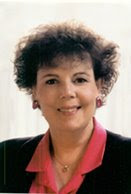
A button can be a number of different things—a round badge with a political message, an electrical component, a measure of cuteness, and, of course, a clothing fastener (and a great way to avoid a “wardrobe malfunction”).
But the button has transcended its status as mere necessity with many sewing enthusiasts and quilters, who recognize that this small item can have a big visual impact on a quilt, accessory, or other project.
In fact, despite its practicality, the button has become a favorite embellishment among many of today’s fiber artists. And it’s no wonder, considering the number of unique and interesting options available in today’s market. They come in every color, every shape, and every size. Plus ... Who doesn’t love buttons? They can make a quilt!












